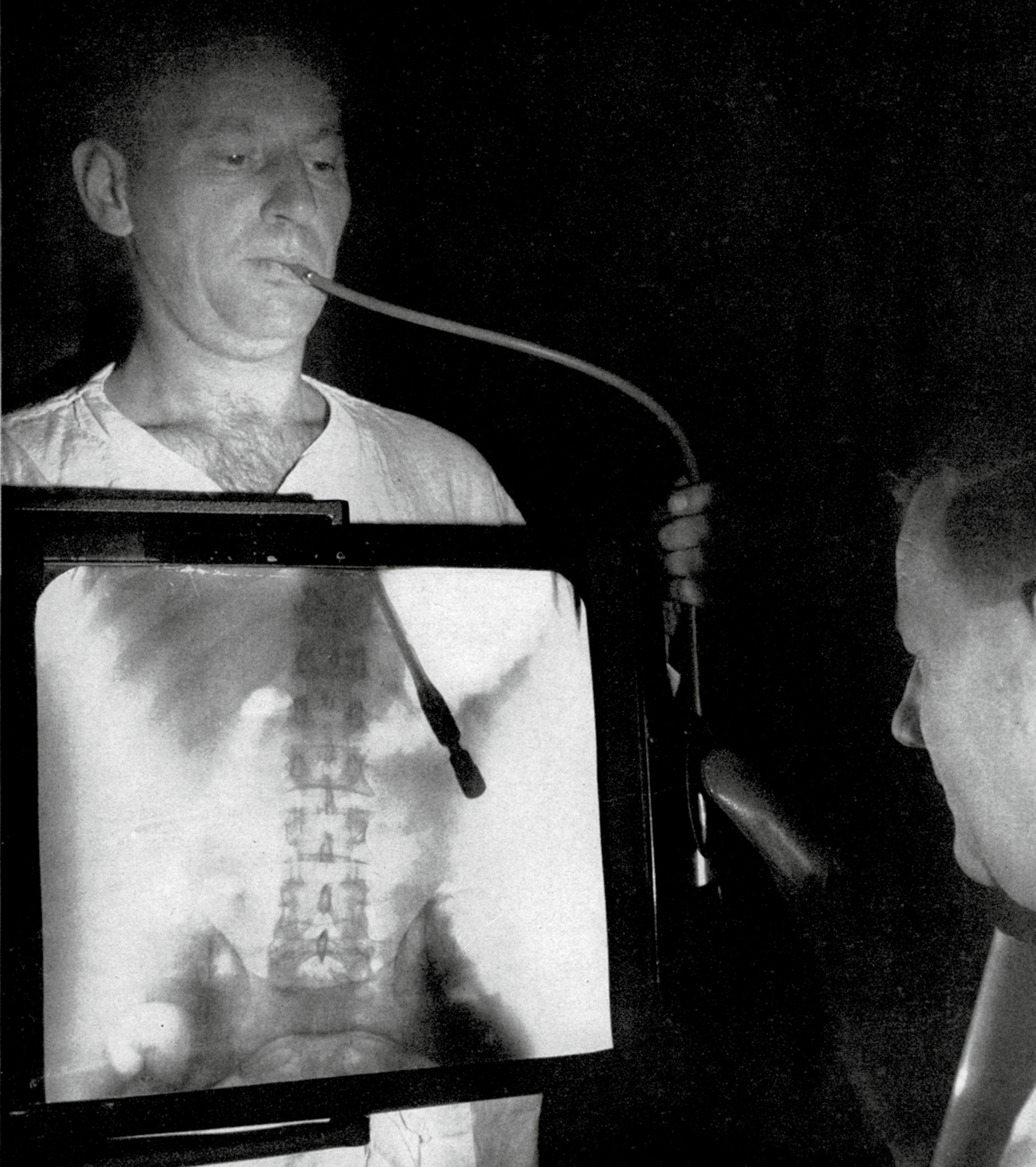Ingestion / The Endoscopic Imagination
The eye inside
D. Graham Burnett
“Ingestion” is a column that explores food within a framework informed by aesthetics, history, and philosophy.
In the course of research into the history of spy cameras, I stumbled recently on the following letter to the editor in the British Journal of Photography, volume 55 (1908):
Gentlemen: In these days of great photographic possibilities one is often obliged to take in a great deal connected with what used to be called our “art-science,” but it is not often one is expected to actually swallow a camera and electric light plant at one gulp.[1]
The correspondent (“F. A. Bridges”) proceeded to report a rumor concerning one “Dr. Fritz Lang, of Munich,” said to have developed “an apparatus … by which the inside of the stomach may be clearly photographed.” The cited account of its operations could be clearer, but reads in relevant part:
The camera is actually swallowed by the patient, and no sooner does it reach his stomach than the walls thereof are illuminated by a small electric lamp attached to the apparatus. At the bottom of the camera is wound a photographic film 20in. long and a quarter of an inch wide. All the surgeon has to do is to pull the cord and thus run the film past the lens.
Such a device, if it in fact existed at that time, would represent a pioneering episode in the history of “endoscopy”—the penetration of the body by instruments affording visual access to what is inside us.

Historians of medicine have paid close attention to endoscopes, not least because the ambition to convey the investigative gaze of a doctor through the hidden channels of the human body has been understood to literalize certain charged aspects of scientific inquiry writ large. For instance, one notes an undeniable element of transgression at work in such probing. And there is, too, that unsettling cross between the phallic and the ocular that has preoccupied many critics of techno-scientific rationality—a convergence especially difficult to dismiss in reviewing the ranks of rigid tubes used to peruse the digestive and urogenital systems of patients from the late eighteenth century forward. Not until the development of fiber optics in the 1950s was it possible to “snake” a slim, flexible image-conveying instrument through the twists and turns of our plumbing. Before that, some portion of the body had to submit to a straightening entrance. Indeed, the notable German physician Adolph Kussmaul famously collaborated with a professional sword-swallower in performing the first successful esophagoscopies in the late 1860s. All of which is to say, most early endoscopes look like a priapic prosthetic for the eye—and that, of course, is exactly how they were used.